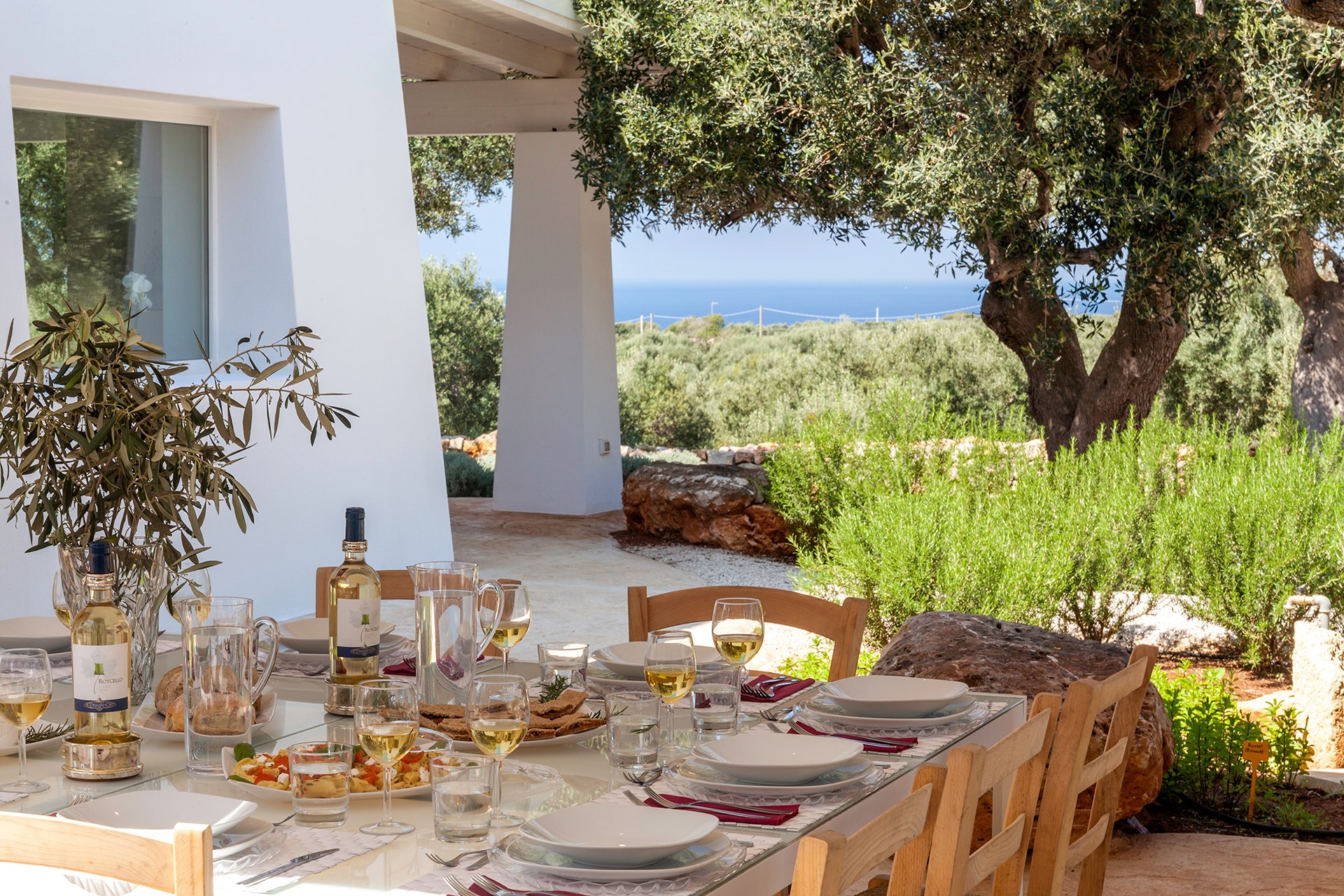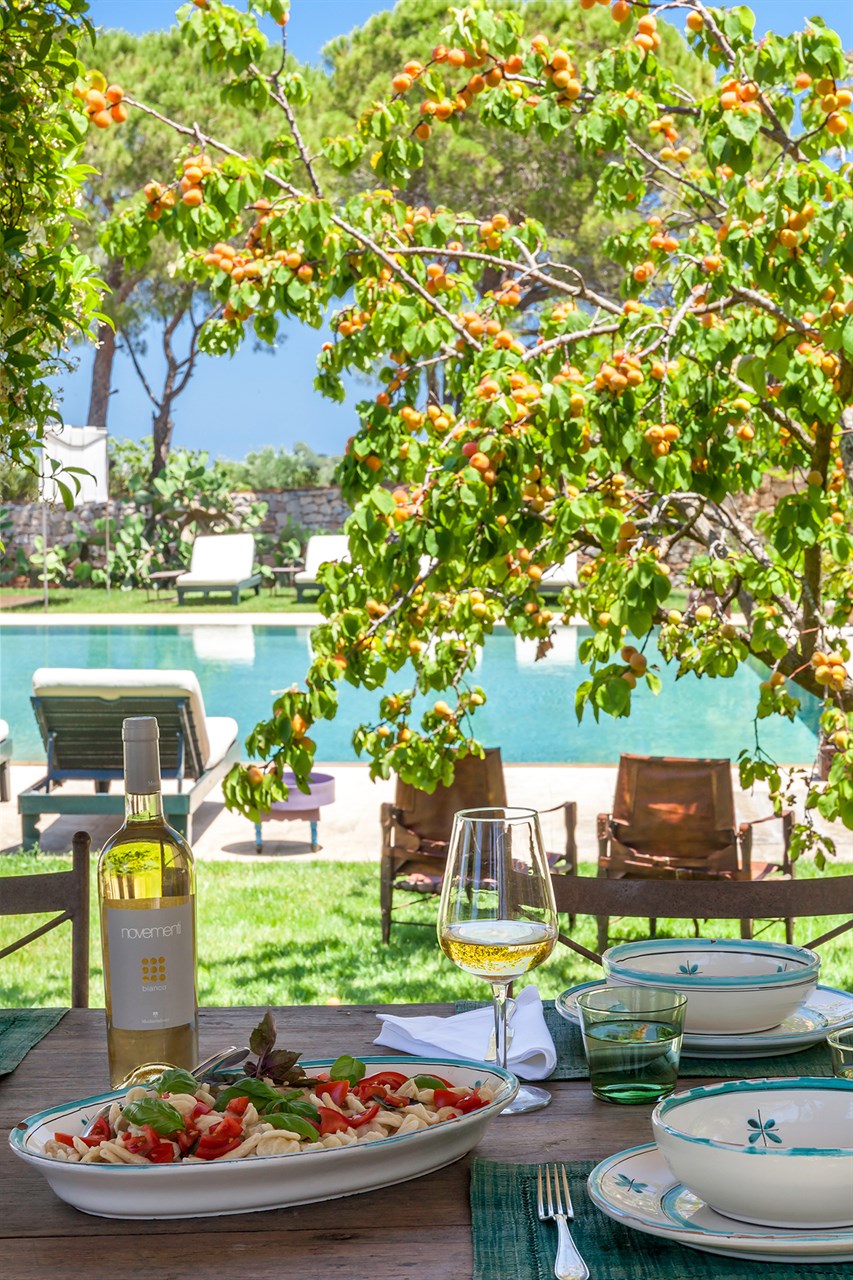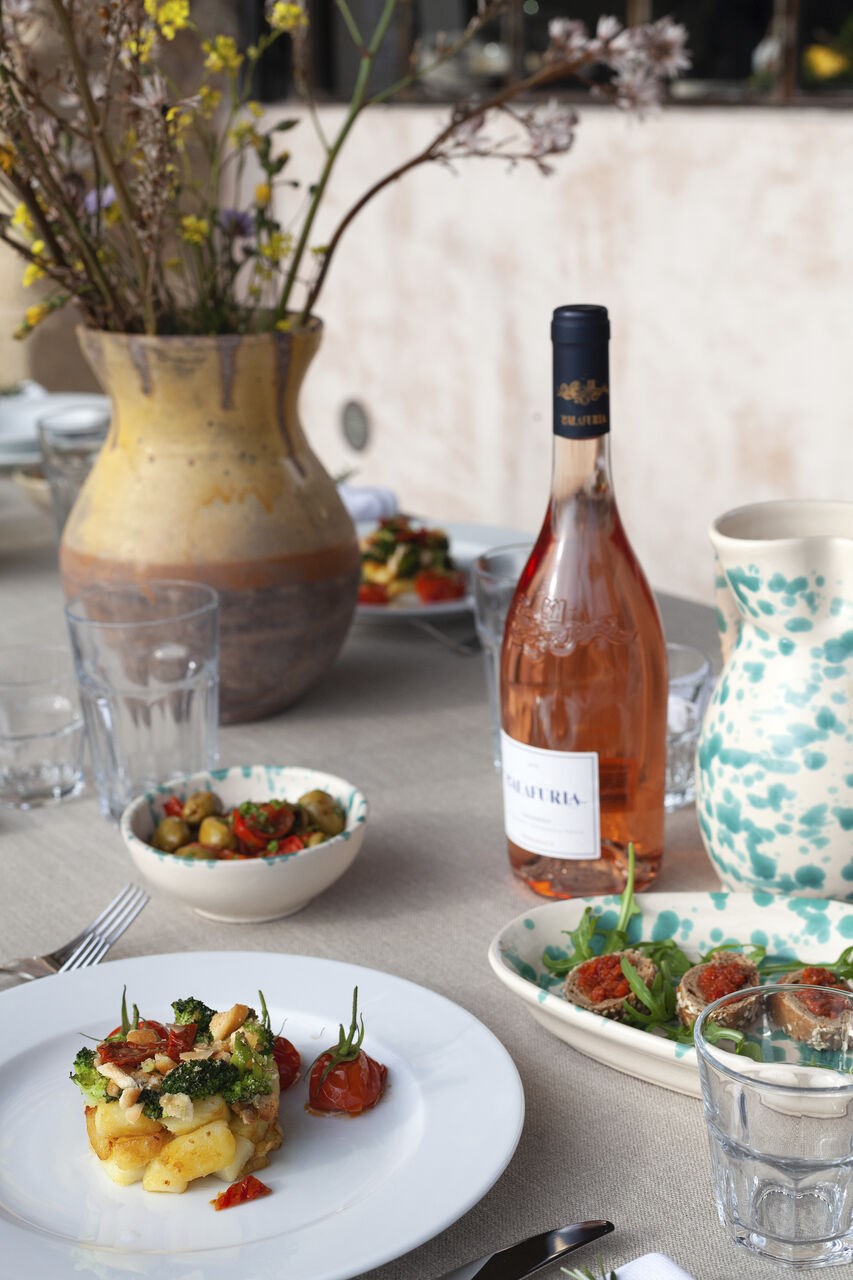savour
south italy Apulia region food & wine
Traditional Apulian food wine and recipes
For millennia Puglia has been predominantly an agricultural region, producing around 40% of Italy's olive oil and a large proportion of its wine. Vast tracts of the region's territory are given over to farming, whether it be crops or livestock, and many inhabitants continue to grow their own produce.
This essentially agricultural nature means that Puglia's cuisine is home-country inspired, predominantly using the abundant local produce such as durum wheat, tomatoes, artichokes, fava beans, rocket, courgettes, beans, fennel, peppers, onions, beef and lamb.
In terms of pasta, Puglians pride themselves on their orecchiette, little ear-shaped shells that are still produced by hand on a daily basis by many signore. It is usually served with tasty sauces such as meat ragu, broccoli and lard, mushrooms or turnip tops. The pasta itself is made rigorously from durum wheat flour, water and salt. Eggs once considered a luxury, are not used in traditional Puglian pasta-making.
Puglia on a plate - recipes from Puglia
Another pasta speciality is maccheroni al forno. The maccheroni is mixed with meatballs, hard-boiled eggs and all manner of other ingredients. Finally, it is topped with a pie crust and cooked in the oven! A sensationally rich and tasty treat!
As with pasta, the local durum wheat is also used in Puglia's delicious bread, which comes in all shapes and sizes and is a constant companion to meals. In more remote villages, communal wood-burning ovens still exist where local housewives can bake their own bread. Altamura, a small town in the north-west of Puglia was the first town in Europe to receive a DOP classification (Denomination of Origin of Production) for its bread. When McDonald's came to town, the locals gave it short shrift, continuing to prefer only sandwiches made with their own bread. Less than two years after opening, the great Ms were taken down and the global hamburger circus left town! A victory for food lovers everywhere!
Puglia's rocky interior is ideal for sheep-farming and, in terms of meat, lamb reigns supreme, a trait that Puglia shares with its near neighbour, Greece. Feast days are characterised by the fragrances of roasting lamb wafting through the streets and most restaurant menus will feature at least a couple of lamb dishes. Horse meat and pork are also popular while beef, traditionally a minor player in the region's cuisine, is more and more popular. One thing to look out for in the Valle d'Itria area, and especially in Cisternino are the rosticceria butchers where you can choose your meat and have it cooked there and then on a hot charcoal grill or in a wood-burning oven. While waiting, just take a seat at one of the tables and get stuck into a glass of local wine!
The presence of so many sheep also means that cheese is generally of ovine extraction. Puglia's pecorinos and ricottas are excellent and ubiquitous. Visitors should also try to find some burrata di Andria,a fresh, soft cheese that has to be eaten within 24 hours of production - absolutely delicious!
Puglia's long coastline and fishing tradition bring large quantities of seafood to the table. Red mullet, anchovies, gilt-head bream, mussels, sea bass and cuttlefish are featured in many recipes and the many seafront restaurants in towns like Gallipoli, Otranto, Brindisi and Taranto serve up feasts of just-caught fish.
If you still have room after the main courses, Puglia's desserts will certainly tempt you. Many are almond-based (the region produces vast quantities of almonds), often combined with honey or vin cotto di fichi (a kind of fig concentrate), while sweetened ricotta cheese sweets are also a local favourite.
Puglia's comforting country cuisine may not be as famous as that of some other Italian regions, but it is full of goodness and genuineness and thoroughly local, a pure expression of popular traditions and the natural bounty of the land.
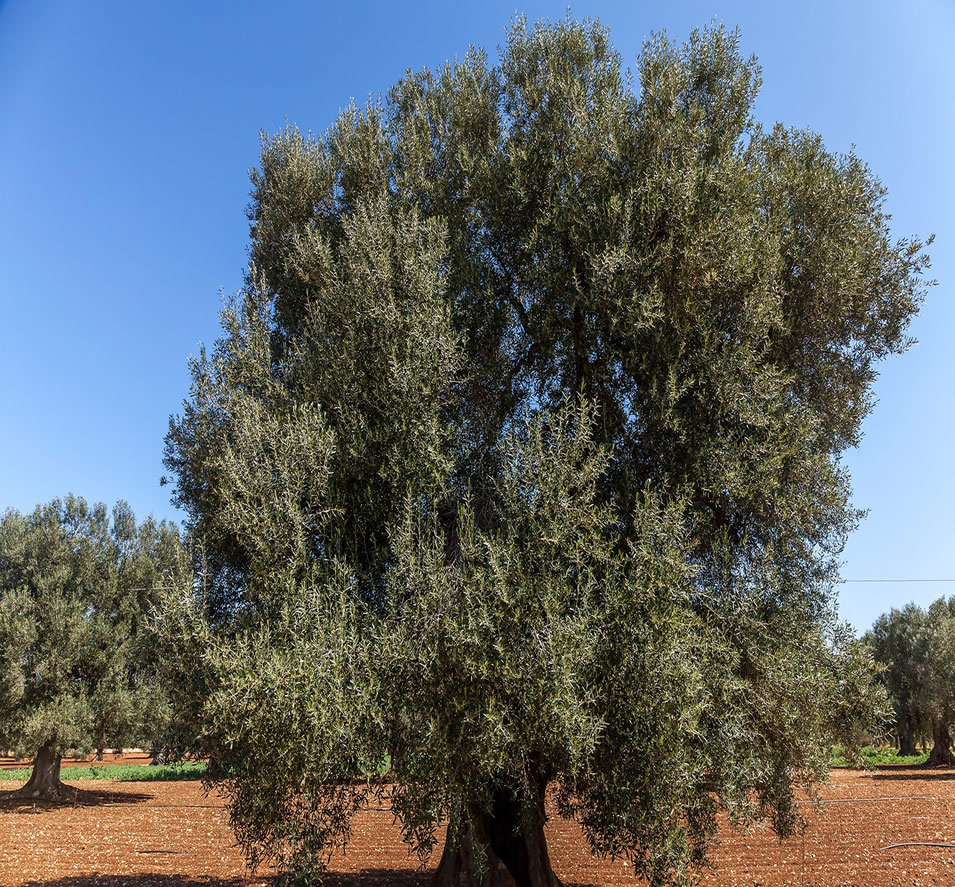
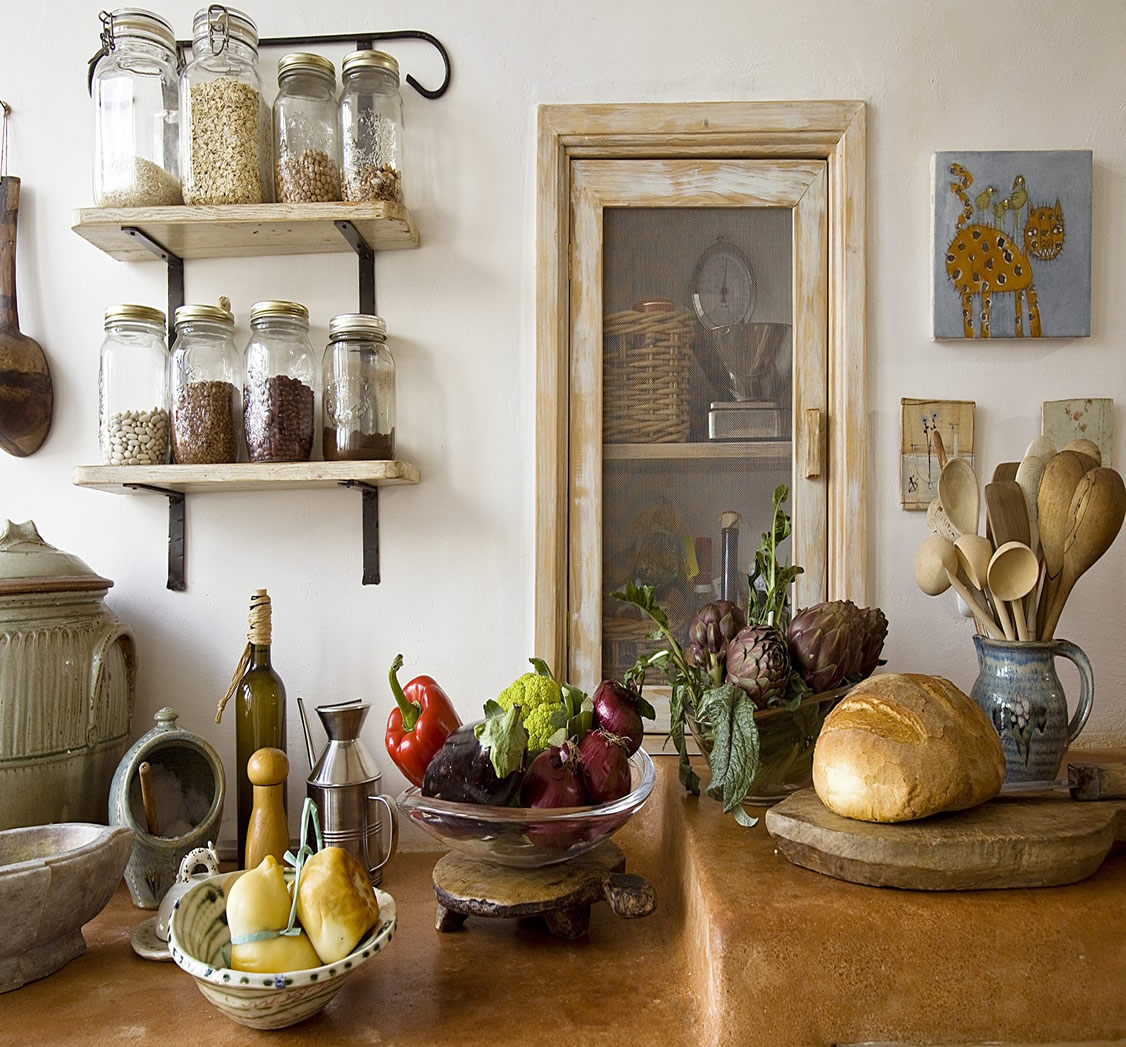
Puglia and its cheese
If there weren't already enough reasons to choose a holiday in Puglia, here's another: the cheese! With dozens of varieties, ranging from the hard, mature and tangy to the soft, spreadable and buttery, Puglia is a little slice of paradise for cheese lovers.
Here are a few we think you should try...
Burrata
The number one spot must go to Burrata, a real Puglian invention we strongly recommend! Produced in Andria and Martina Franca, it is basically a cow's milk mozzarella with a surprise inside: a delicately oozing liquid cream filling… Ideally it should be eaten the same day of production, but in the unlikely event that you don’t eat it all in one go, it can last a couple of days in the fridge!
Caciocavallo Podolico
The Barbarian Invasions of the 5th century AD, brought devastation to many parts of Italy. It was not all bad, however, as the very same pillaging hordes also bought their favourite long-horned species of cattle from Ukraine. Hundreds of their descendants (the cattle!) still chew the cud in the Gargano area of Puglia. The aromatic, herby milk of these Podolic cows is used for making an excellent spicy, strong cheese, which is left to ripen for around 3 years...
Canestrato Pugliese
The only DOP cheese made exclusively in Puglia (Caciocavallo Silano, also a DOP, is made in Basilicata, Calabria and Campania too), Canestrato Pugliese is a hard cheese made from sheep’s milk. Its name derives from the little baskets (canestri) in which it is left to age. It is produced between December and May when the flocks have come down from the mountains of Abruzzo to graze on the green, green grass of the Tavoliere Pugliese, in the provinces of Foggia and Bari. The locals love to grate it on their pasta.
Fallone di Gravina
Fallone is another of those “eat today” cheeses that Puglia loves to produce. Made with a mix of sheep’s and goat’s milk, it has a good flavour and is possibly at its best when spread on a chunk of bread from Altamura, where, along with Gravina, it is also made.
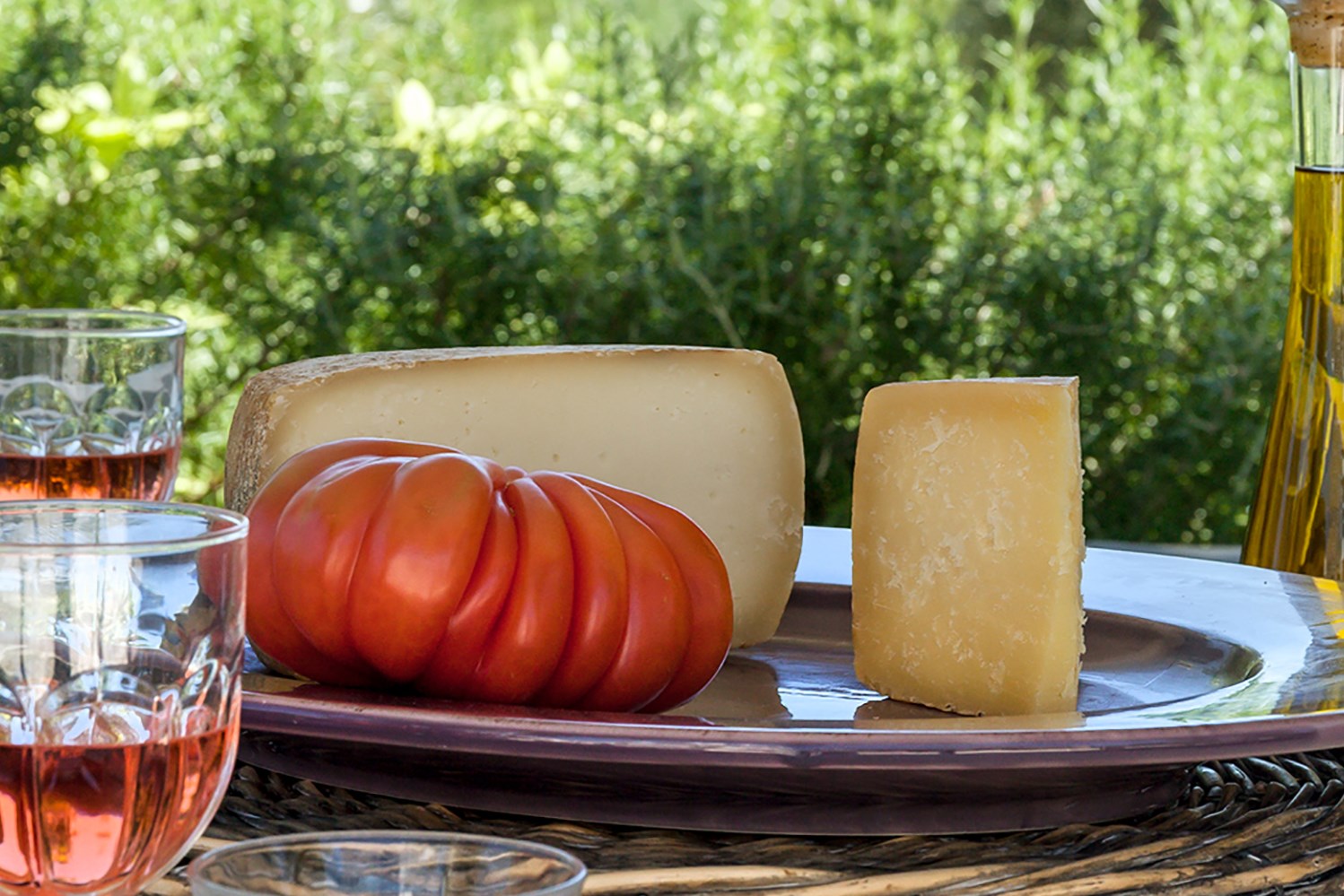
Manteca
Manteca is another Puglian cheese invention, which is to say, not a just cheese! Pear-shaped, made with cow’s milk and not matured, it boasts two layers, the inner one being a soft deliciously creamy butter.
Marzotica
Made with a mix of cow’s and sheep’s milk in the Lecce area, Marzotica, as the name might imply, is traditionally produced in March (marzo in Italian) after the sheep have been grazing on the succulent green Spring grass. It is left to mature and dry for around two weeks before being wrapped in grass. This relatively short aging process gives it a delicately tangy flavour and, as a consequence, Marzotica is often grated on pasta dishes to add an extra layer of taste.
Pampanella
Pampanella, another cheese meant to be eaten the same day it is made, has a long history going back at least a couple of centuries. It is produced in Grottaglie using a mix of milks and takes some of its distinct flavour from the fig leaf in which it is wrapped.
Ricotta forte
Ricotta forte or ricotta scanta is made all over Puglia (and neighbouring Basilicata) and is often used in cooking, thanks to its pungent, gum-tingling qualities! This flavour comes from a 3-month resting process in terracotta containers. Every three or so days it is stirred and then left once more to intensify its flavours. You will surely come across it on many restaurant menus, possibly in the form of orecchiette con la ricotta forte, and in shops, where it is sold in distinctive glass jars.
Wine in Puglia
If Italy is the largest producer of wine in the world, it is largely thanks to Puglia, which produces more than any other Italian region, about 17% of the total!
Viticulture is deeply rooted in local traditions but until 20 or so years a large proportion of Puglia’s grapes were used to add “substance” to wines produced in the rest of Italy and France. Thankfully this is no longer the case and Puglia now boasts 25 different DOC areas and some excellent vintages of its own.
The most widely grown grape variety is Negroamaro (literally ‘black bitter’). Almost exclusively cultivated in Puglia, Negroamaro is used to produce some of the region’s best wines, including Salice Salentino. The epithet of most famous grape, however, goes to Primitivo, whose wines, including the Primitivo di Manduria, are generally high in alcohol content and full in body. Curiously, the Primitivo grape shares its genetic make-up with California’s Zinfandel varietal.
White wines in Puglia count for less than 20% of the overall production but are gradually growing in importance. Local grapes such as Bombino Bianco, Bianco d’Alessano and Verdeca rub shoulders with international varieties including Chardonnay and Sauvignon to produce some excellent results.
One of the best ways to discover Puglia’s wines for yourself is to sample them in the comfort of one of our villas. And thanks to our unique in-villa wine delivery service, this is effortlessly possible.
DOC and DOCG
There are 28 DOC (Denominazioni di Origine Controllata) zones in Puglia:
Aleatico di Puglia – Alezio – Barletta – Brindisi - Cacc’e mmitte di Lucera - Castel del Monte - Colline Joniche Tarantine - Copertino - Galatina - Gioia del Colle - Gravina - Leverano - Lizzano - Locorotondo - Martina Franca - Matino - Moscato di Trani - Nardò - Negroamaro di Terra d’Otranto - Orta Nova - Ostuni - Primitivo di Manduria - Rosso di Cerignola - Salice Salentino - San Severo - Squinzano - Tavoliere delle Puglie o Tavoliere - Terra d’Otranto
… and 4 DOCG:
Primitivo di Manduria Dolce Naturale - Castel del Monte Bombino Nero - Castel del Monte Nero di Troia Riserva - Castel del Monte Rosso Riserva
The most common Puglian grape varieties
Indigenous red varieties
Negromaro
Literally meaning ‘black bitter’ (or ‘black black’ if the amaro part of the name derives from the Greek mavros), Negroamaro is practically unique to Puglia and produces some of Salento’s most distinctive wines, especially those produced in the Salice Salentino DOC zone, where it is occasionally blended with up to 20% of Malvasia Nera di Lecce. Depending on their age, Negroamaro wines are redolent of dark berries and cherries, liquorice, tobacco and pepper. The grape is also used to produce some excellent rosé vintages.
Primitivo
As its name suggests, Primitivo is an early ripening grape which is harvested towards the end of August. Largely cultivated in the centre-north of Puglia, between Bari and Taranto, Primitivo grapes produce wines that are full-bodied and high in alcohol (up to 15˚ or even more). Its organoleptic qualities embrace fruity hits of cherry, a certain spicy sourness, distinct violet tones, and well-balanced tannins. Curiously, Primitivo shares its DNA with California’s Zinfandel varietal.
Uva di Troia / Nero di Troia
In the north of Puglia around Andria, the king of red grapes is Uva di Troia (recently re-baptised Nero di Troia). Uva di Troia wines are made in purezza or with the addition of other grapes, including Montepulciano, Negroamaro and even Primitivo. There are two varieties of grape, and the smaller, named Canosina, generally produces the most interesting wines thanks to its late ripening (up to the end of October) and its intense flavour. One can expect blackcurrant and black pepper, a spicy finish and hints of tobacco and leather.
Bombino Nero
More or less synonymous with the area of Castel del Monte in the north of Puglia, Bombino Nero produces light, soft, fruity reds and excellent rosés.
Susumaniello
One of the rarest grape varieties in the world, Susumaniello is increasingly popular amongst winemakers in Puglia, especially around the Salice Salentino area. Increasingly it is vinified alone, but traditionally it has been blended with Negroamaro. The best single varietal wines are peppery, plummy and with a intimation of dark chocolate.
Malvasia Nero
Two brothers – di Brindisi and di Lecce – make up Puglia’s Malvasia Nero family. The latter is mostly added to Negroamaro to provide balance and extra character. The former is increasingly used in purezza to produce rich, intense wines imbued with the summer heat of Salento.
Indigenous white varieties
Verdeca
Verdeca provides the backbone for many of Puglia’s best white wines, including the much-loved Locorotondo DOC (when it is blended with Bombino Bianco, Bianco d’Alessano and Minutolo), but it also produces single varietal wines, which, at their best, are rich, golden and herbal but with a counterbalance of acidity.
Bombino Bianco
Traditionally a great mixing grape produced in quantity, Bombino Bianco is receiving more love from winemakers who see its potential when grown in lower yields. The best single varietal vintages express intense minerality balanced by apricot roundness and hints of zesty tropical fruit.
Bianco d’Alessano
Like many of the white grape varieties featured here, Bianco d’Alessano has recently started to receive more attention. As a blending grape it offers creaminess and soft hints of pear and apple. On its own it produces fragrant, clean and refined wines that are suited to delicately flavoured dishes.
Minutolo
Long believed to be a cousin of Fiano (but apparently no relation), Minutolo was on the way out at the end of the 20th century before a few pioneering winemakers saved it from extinction. It is now enjoying a mini renaissance, especially in the Valle d’Itria, where it is used both in purezza and for blending. It offers soft melony freshness, good acidity, herbal aromatics and a delicate hint of fennel.
Apulian food cuisine wine and recipes
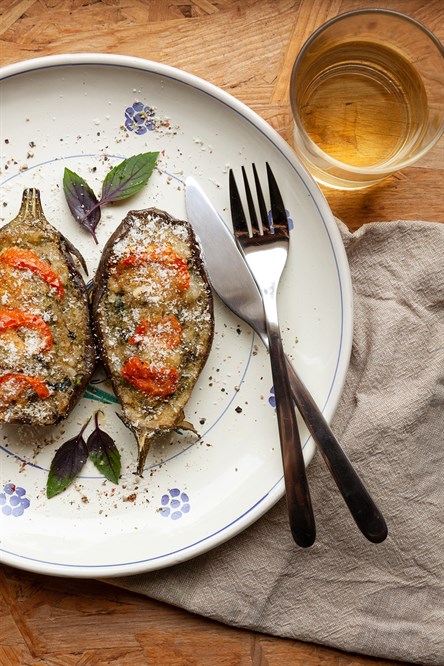
Puglia's cuisine is deeply steeped in the region's agricultural tradition and an instinct for self-sufficiency. As such many of the most representative dishes have their origins in "cucina povera", making use of whatever is at hand or that can be picked from the garden or even the hedgerow! A classic example of this is Puglia's signature dish, orecchiette con le cime di rapa, pasta cooked with turnip greens. Simple in the extreme but absolutely delicious!
The freshness of ingredients is all-important as is in their provenance: people cook overwhelmingly with locally produced or reared foodstuffs such as durum wheat, tomatoes, artichokes, fava beans, courgettes, beans, fennel, peppers, onions, seafood and lamb.
The recipes that appear below represent the finest and most traditional examples of Puglia's culinary palate. We hope you will try them, love them and keep coming back for more - this page is destined to grow and grow!
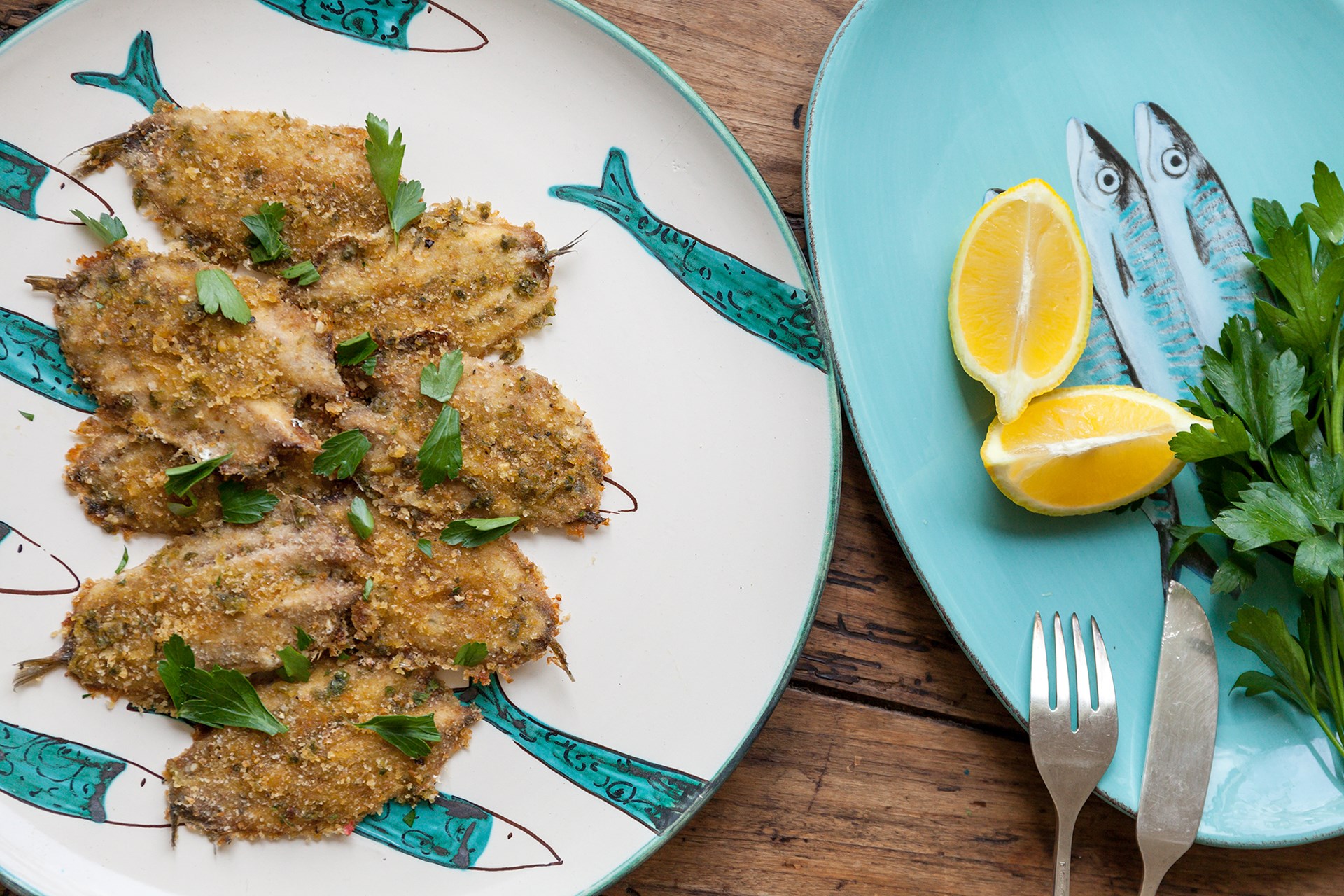
Antipasti and starters
Peperoni al forno
(Succulent baked peppers)
Ingredients (serves 4)
4 peppers (green and red)2 cloves of garlic, sliced2tbsps capers6 anchovy fillets, chopped8tbsps breadcrumbsExtra virgin olive oilSalt and pepper
ProcedurePlace the peppers in a hot oven for about half an hour until the skins start to blacken. Take out, leave to cool and then peel off the skins. Chop the peppers into strips, about 2 inches wide. Grease the bottom of an oven tray with olive oil and start layering the peppers. On the top of each layer throw in a few capers, a few slices of garlic, some of the chopped anchovy fillets, a sprinkle of bread crumbs and a little salt and pepper. When the top layer is finished, drizzle with olive oil and one last layer of breadcrumbs. Then place in a hot over for about 15-20 minutes, until the peppers are soft and succulent. It is excellent as a hot side dish to lamb or chicken, or can be served cool as part of a mixed platter of antipasti.
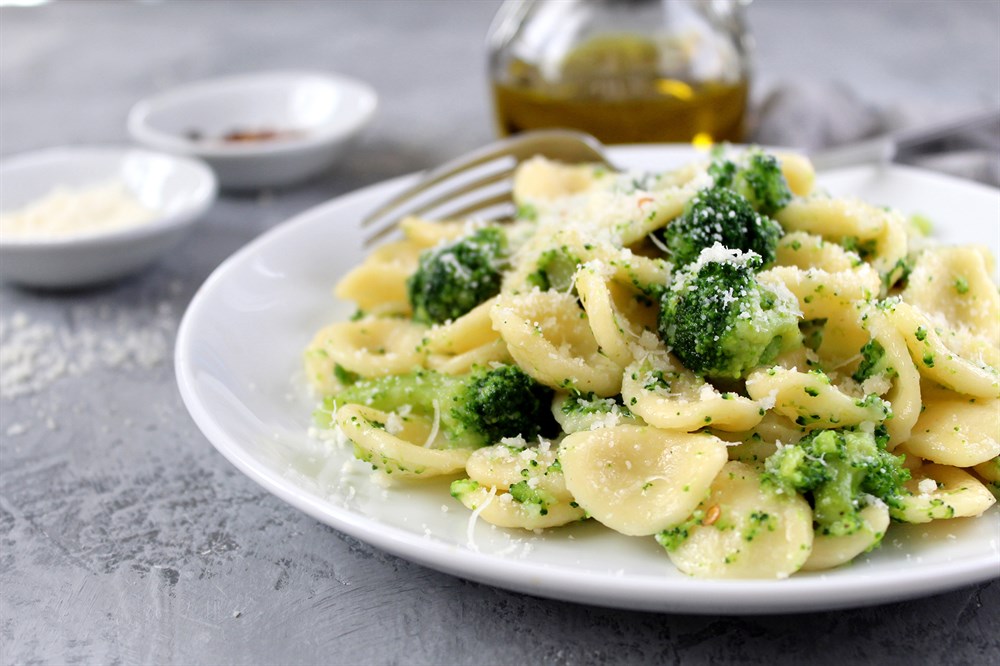
Melenzane ripiene
(Stuffed aubergines)
Ingredients (serves 4)2 aubergines50g breadcrumbs4 teaspoons of grated pecorino cheese1 clove of garlic, choppedA bunch of basil4 anchovy fillets2 tins of chopped plum tomatoesExtra virgin olive oilSalt and pepper
ProcedureCut your aubergines in half lengthways, place in a pan of salted boiling water for about 5 minutes and then take out.When they are cool enough to handle, scoop most of the pulp and chop up. Heat a little olive oil in a pan and gently fry the garlic. Then add the anchovies, letting them melt, and then add the chopped aubergine pulp for a few minutes. Add the tomatoes, season, tear in a handful of basil leaves and leave to cook on a low heat until you get a thickish sauce.
While the sauce is cooking away, heat the oven to about 220, place the aubergine on a slightly oiled baking tray and, when the sauce is ready, spoon it into the aubergines. Top liberally with the pecorino cheese and place in the oven for about 20 minutes. Sprinkle with a little more torn basil and serve.
Polpi in umido
(Stewed octopus)
Ingredients (serves 4)500g octopus cut into smallish pieces (ask your fishmonger to clean and cut up for you!)1 clove of garlic, chopped1 sprig of rosemaryExtra virgin olive oil1 glass white wine200g ripe tomatoes, choppedA handful of parsleySalt and pepper
ProcedureAsk your fishmonger to clean and chop the octopus into chunks and strips. Heat some olive oil in a pan and add your chopped garlic and the sprig of rosemary. After a couple of minutes, take out the rosemary (it will flavour the oil quickly) and add the octopus. Sautée it gently for a few minutes and then add the wine. Burn off a little of the alcohol and then add the chopped tomatoes. Mix well, season to taste and then cover with a lid and leave to cook slowly on a low heat for around an hour and a half (checking that the liquid remains - if not add a little boiling water occasionally). When cooked, sprinkle with chopped parsley and serve with a little fresh bread as a starter.
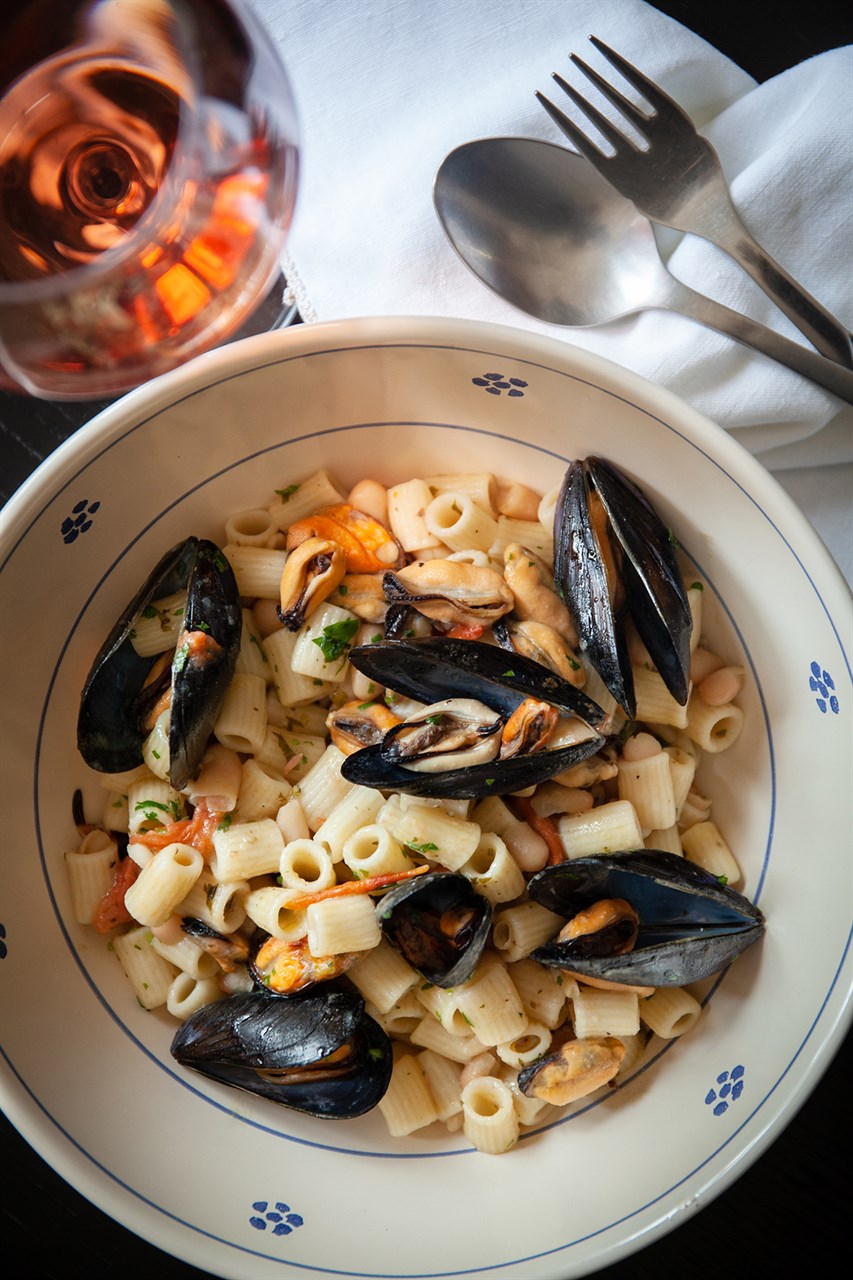
Alici arraganate
(Anchovies au gratin)
Ingredients for 4 people500g fresh anchovies, cleaned60g yesterday's bread1 clove of garlica small bunch of parsley1 tsp capers (unsalted)Extra virgin olive oil1 tsp white wine vinegarSalt and pepper
ProcedureAsk your fishmonger to clean and open the anchovies like a book. Wash and dry them. Dribble a little olive oil into an earthenware oven dish and lay the anchovies skin-down to cover the bottom. Season with a little salt and pepper.
Put the bread, the garlic, the parsley, the oregano, the capers and the vinegar into a blender and mix until you have moist breadcrumbs. Season with a little salt and pepper and put on top of the anchovies. Place in the oven for about 15 minutes at around 180°C and serve with a glass of white wine and a little mixed salad.
Polpette di melanzane
(Fried aubergine balls
Ingredients for 4 people3 large aubergines2 tsp capersA few basil and mint leaves1 cup grated Parmesan or salty ricotta cheese1 clove of garlicA plate of breadcrumbs2 eggsSalt and pepperOlive oil
ProcedureWash and slice the aubergines and then place into salted boiling water. When soft, take out and drain, applying some pressure to ensure that most of the moisture is drained out. Chop into smaller pieces and place in a food blender with the capers, the garlic, the basil and mint, the cheese, salt and pepper and one egg and mix, but not too finely. If the mixture is too liquid, add some breadcrumbs. Shape into balls about the size of a billiard ball, pass through the beaten egg and roll in seasoned breadcrumbs until totally covered. Then fry in hot olive oil until golden brown. When cooked, place on kitchen roll to get rid of any excess oil and serve with a dipping sauce or two. A hot, tomato and chilli sauce is recommended.
This recipe has been adapted from "Il Gusto del Tacco" a wonderful book of Puglian recipes available in English, by Anna Maria Chirone Arnó.
Soup
Minestrone di fave con cicoria
(Fava bean soup with chicory)
Ingredients (serves 4 people)400g dried fava beans800g chicory1 clove of garlicExtra virgin olive oilSalt and pepperA light spinkle of chili pepper flakes
ProcedureLeave the fava beans to soak overnight or for however many hours recommended on the packet. When you come to cook, drain them and place in a pan. Cover with water, season and leave to cook at a gentle bubble for around 3-4 hours or until they have begun to mash. Then pass through a sieve, place in a pan with a little oil and a little water if really thick.
Wash the chicory, cut roughly and add to a tall pan with some olive oil and the clove of garlic chopped into smallish pieces). Season and add a little sprinkle of chili flakes, mix well and cover with a lid. Cook on a very low flame until the chicory is soft. Separate the chicory from the liquid and get ready to serve. Ladle the fava bean soup into bowls and top with a spoonful of chicory. Drizzle with some extra virgin olive oil and sit down to a hearty, warming winter feast!
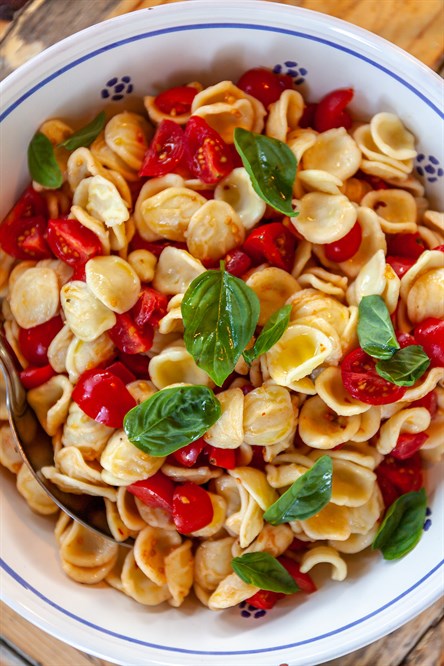
Pasta dishes
Capello da Gendarme
(Gendarme's Hat - a specialty of Lecce, basically a pie filled with vegetables, pork, pasta, eggs, and cheese... not for the faint-hearted!)
Ingredients (for 4 people – with plenty left over for the next day!)
For the pastry350g self-raising flour2 tbsp olive oilA pinch of salt
For the filling250g aubergines250g courgettes200g small pasta such as maccheroncini200g pork sausage meat4 hard-boiled eggs100g mozzarella cheese (bufala is even better!)Salt and pepperOlive oil
ProcedurePass the flour through a sieve and then form into a well shape. Add the oil and the salt and mix well. If it is too dry, add a little warm water. Keep kneading and working the dough you have a nice ball that is not too sticky (add a little more flour if this is the case). Then cover with a tea-towel and leave to rest for about 1 hour.
While the pastry dough is resting, you can start work on the filling. First, wash the vegetables and cut them into smallish cubes. Place the aubergine pieces in a colander, sprinkle with salt, cover with a weight and leave in the sink for about half an hour to extract any excess liquid.
When the aubergine is ready, add to the courgette and fry in olive oil until golden all over. Take out and place on some kitchen roll to remove any excess oil. Then, gently sauté small chunks of the sausage meat in a little olive oil for a couple of minutes. Don’t leave it too long as they will be fully cooked later.
Cook the pasta in salted boiling water until just al dente. Drain well and mix with the aubergines, courgettes and sausage meat.
Hard-boil and then slice some eggs and break the mozzarella into small chunks. Now all your ingredients are ready!
Roll out the pastry into an oval until it is a little less than 1cm thick. Then, on one half add all the ingredients (aubergines and courgettes, sausage meat and pasta, hard-boiled eggs, and, on top, mozzarella). Season to taste and then fold the second half over on top. Seal the edges with a beaten egg or a little water, crimp well and place onto a baking tray covered with oven-proof paper. Place in a pre-heated oven (about 200 C) and cook for about half an hour, or until the pastry is cooked and browned.
Tubetti pasta with mussels Special recipes Tubettini con le cozze Alba has its truffles, Napoli its mozzarella di bufala, and Parma its ham. But what about Taranto, Puglia's ancient Greek city standing at the top of the Ionian Sea? Well, for at least 1,000 years, the city's fishermen have been cultivating fat, juicy, sweet mussels in the Mare Piccolo, a large inland lagoon connected to the sea by a couple of narrow water ways. The secret to the mussels' quality, so they say, is that the Mare Piccolo is fed by over 30 fresh water springs, which give these inimitable bivalve molluscs their unique taste, size and healthiness. Needless to say, the Tarantini love their mussels and cook them in all manner of ways. One of their favourites is with tubettini, small pasta tubes, as per the delicious recipe below. Tubettini con le cozze Ingredients (serves 4) 600gr mussels 10 cherry tomatoes, halved 2 cloves garlic, chopped A little dried, crushed chili pepper 1 glass of dry white wine Olive oil Salt and black pepper A handful of chopped parsley 400gr tubettini pasta Procedure Wash the mussels well under running water and pull out the beards (the stringy bits hanging out of the shell). When ready, leave in a bowl of cold water. Heat a pan of water for the pasta and when it comes to the boil add salt and the little pasta tubes. While the pasta is cooking, put some olive oil in a large pan and add the chopped garlic. After a couple of minutes, add the cherry tomatoes. Once these have softened a little, add the white wine and bring to a boil so the alcohol evaporates. Taste and season with salt and pepper and add the mussels. Cover with a lid and leave for a couple of minutes until the mussels have opened. By this point, the pasta should be nicely al dente. Strain, but keep a little liquid back in case you need to loosen the sauce, and add the pasta to the mussels, along with the chopped parsley. Mix well on a low heat for a minute and serve. Buon appetito! Orecchiette con cime di rapa Orecchiette con cime di rapa Little ears with turnip tops might not sound like the most appealing of dishes, but Puglia's classic example of cucina povera is starting to find a place on the menus of quality restaurants all over the world. Cime di rapa - translated variously as turnip tops or broccoli rabe - are slightly bitter leafy greens with little florets similar to those of tender stem broccoli. In season between November and April and packed with a nutritious cocktail of vitamins and minerals, they are the perfect winter vegetable. Although cooked in a variety of different ways in Puglia, cime di rapa find their apotheosis when combined with garlic, chili and anchovies, and tossed with orecchiette pasta. If you can't find cime di rapa, use tender stem broccoli instead. Orecchiette con cime di rapa Ingredients for 4 people 400g orecchiette (the traditional ear-shaped pasta of Puglia) 700g washed turnip greens without the stems (or 500g tender stem broccoli) 2 cloves of garlic, finely chopped 2 anchovy fillets 1 small chili pepper, chopped Toasted breadcrumbs Procedure Wash, chop roughly, and then boil the turnip greens in salted water for a couple of minutes. When cooked, take out but keep the water to cook the orecchiette in. In a large frying pan, fry the garlic, the chili and the anchovies in a little olive oil. The anchovy fillets will all but disappear. Then add the turnip greens and toss well, amalgamating all the ingredients. Leave to cook for a few of minutes Meanwhile, cook the orecchiette in the turnip greens' water. If you've made the orecchiette fresh yourself (bravo!), they'll only take a minute (once they rise to the top they're ready); if you've bought some, follow the instructions on the packaging for the cooking time. When cooked, drain (keeping a little water to loosen the sauce if necessary), and add to the frying pan. Toss well, stir through and then serve with a sprinkling of toasted breadcrumbs.
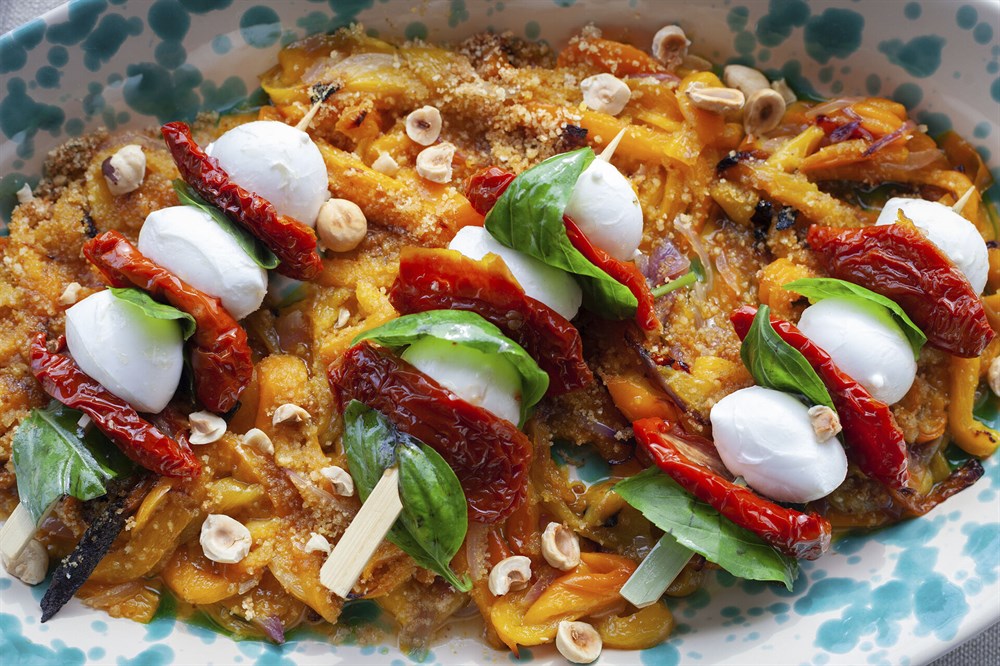
Tubettini con le cozze
(Small pasta tubes with mussels)
Ingredients (serves 4)500gr mussels10 cherry tomatoes, halved2 cloves garlic, choppedA little dried, crushed chili pepper1 glass of dry white wineOlive oilSalt and black pepperA handful of chopped parsley400gr tubettini pasta (little tubes)
ProcedureWash the mussels well under running water and pull out the beards (the stringy bits hanging out of the shell). When ready, leave in a bowl of cold water.
Heat a pan of water for the pasta and when it comes to the boil add salt and the little pasta tubes. While the pasta is cooking, put some olive oil in a large pan and add the chopped garlic. After a couple of minutes add the cherry tomatoes and once these have softened a little add the white wine and bring to a boil so the alcohol evaporates. Taste and season with salt and pepper and add the mussels. Cover with a lid and leave for a couple of minutes until the mussels have opened.
By this point, the pasta should be nicely al dente. Strain, but keep a little liquid back in case you need to loosen the sauce and add the pasta to the mussels, along with the chopped parsley. Mix well on a low heat for a minute and serve.
U Tridde
(Fresh pasta in a turkey broth, typical of Locorotondo inn the Valle d'Itria)
Ingredients (for 5-6 people)For the pasta500g durum wheat flour4 eggs100g pecorino cheeseChopped parsleySalt and pepper
For the broth1 turkey leg1 carrot1 onion chopped in half1 stick of celery2 cloves of garlic1 large glass of white wine2 litres watersalt and pepper
ProcedureFor the pasta: place the flour on your work surface or on a large wooden chopping board and make a whole in the middle. Add the eggs, the cheese, the parsley and season with salt and pepper. Then start the mixing with your hands, gradually creating a homogenous dough. Once this has been obtained cover in clingfilm and place in the fridge.
For the broth: add all the ingredients and bring to a gentle boil. Cover and leave for around 2 hours, topping up with water and checking for seasoning as you go. When it is ready, strain and flake bits of the turkey back into the broth.
When the broth is almost ready, take your pasta out of the fridge, place on a floured work surface or wooden board and roll out with a rolling pin until you obtain a flat expanse of pasta about 2-3mm thick. Then cut into 2cm-wide strips and then into small squares (about 2cm by 2cm). Add to your gently simmering turkey broth and cook for a couple of minutes. Serve with a sprinkling of chopped parsley, a little grated pecorino cheese and a bottle of Locorotondo DOC white wine!
Ciceri e tria
(Tagliatelle with chickpeas)
Ingredients for 6-8 people500g chick peas500g fresh egg tagliatelle (called tria in Lecce and around)1 large onion, finely chopped2 cloves of garlic, chopped2 bay leaves2-3 ripe tomatoes, choppedExtra virgin olive oil1 small stick of celerySalt and pepper
ProcedureSoak the chickpeas in water the night before (for about 12 hours) adding a teaspoon of bicarbonate of soda. In a large pan, heat some olive oil, gently fry the onion and then add the tomatoes, the chickpeas, and the bay leaves. Cover with ample water, season and leave to cook slowly until the chickpeas soften. Then add about 400g of the pasta. While this is cooking, take a frying pan, heat some olive oil and gently fry the remaining pasta. Serve the chickpeas and pasta first, adding a few pieces of crunchy fried tagliatelle on top.
Taiedda
(Potato, vegetable and mussel bake)
Ingredients for 5-6 people250g potatoes250g courgettes250g aubergines500g mussels50g grated pecorino cheese2-3 ripe tomatoes, chopped1 small onion, choppedParsley50g breadcrumbs100g rice2 tbsp capersSalt and pepperExtra virgin olive oilOreganoProcedurePeel the potatoes, wash and slice thinly. Do the same with the courgettes and the aubergines. Put some oil in an oven dish and add the chopped onion, tomato and parsley. On top of this place a layer of potatoes, sprinkle with breadcrumbs and cheese and then add a layer of aubergines and courgettes and a few capers. Add a layer of rice (uncooked) and then the mussels (debearded and scrubbed previously). Finally, add another layer of potatoes. Season, sprinkle with oregano, add a final touch of tomato and some breadcrumbs. Drizzle with olive oil and add enough water to cook the potatoes and rice. Place in a hot oven and leave to cook until you can easily slice through the layers with a knife. By this time the top should be golden brown.
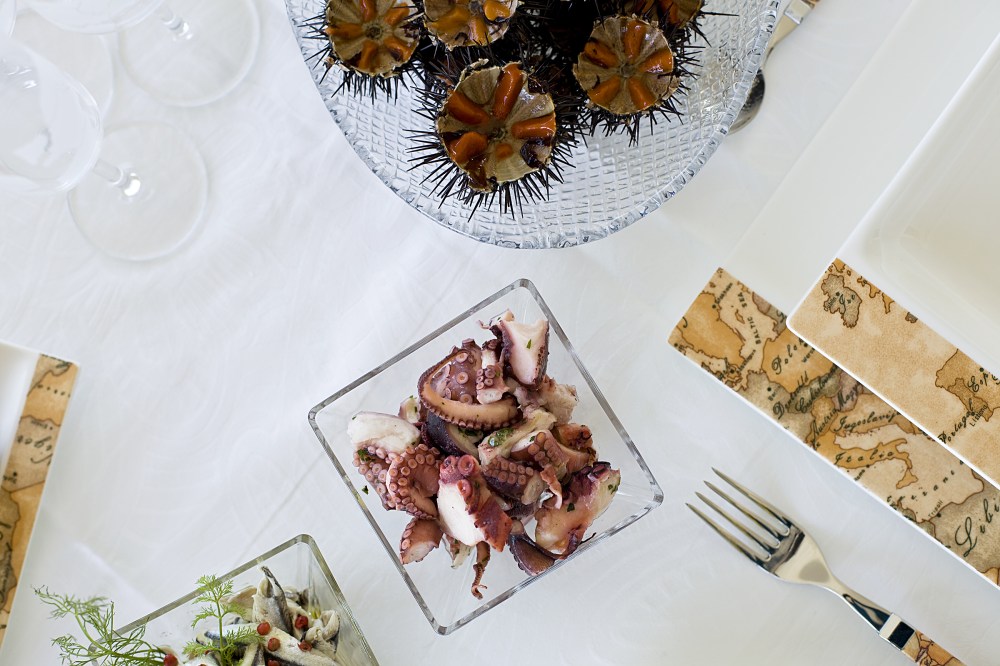
Orecchiette con sugo alla ricotta forte
(Orecchiette pasta with tomato sauce and ricotta forte cheese)Ingredients (serves 4 people)400g orecchiette250g tomato passataA few leafs of basil150g ricotta forte1 tsps chilli paste1 smallish onionExtra virgin olive oilSalt and pepper
ProcedureChop the onion finely and gently fry until soft. Add the tomato passata, mix well and leave to cook on a low flame for about 10 minutes. After this time, add the ricotta forte and mix well so it amalgamates fully with the sauce. Add a teaspoon of chilli paste, mix well and take off the heat.Cook the orecchiette in salted water until al dente. When ready, drain, add to the sauce and toss on a low heat, tearing in some basil as you go. You are now ready to serve up!
Orecchiette con le cime di rapa
(Pasta with turnip tops)
Ingredients for 4 people500g orecchiette (the traditional ear-shaped pasta of Puglia)1kg washed turnip greens without the stemsGarlic1 anchovy filletSaltChili pepperBreadcrumbsProcedureGently boil the turnip greens in salted water. When cooked, take out, keeping the water to cook the orecchiette in. In a large frying pan, gently brown the garlic in a little olive oil and then add the turnip greens and the anchovy fillet. Mix well and leave to cook for about 5 minutes. Meanwhile, cook the orecchiette in the turnip green water until al dente. Drain, add to the frying pan and mix well for a couple of minutes. Serve with a sprinkling of breadcrumbs and a little chili pepper.
Meat and vegetarian dishes
Un Trionfo d'Estate
(A summer feast of vegetables)
Ingredients (for 6 people)
4 medium-sized courgettes (zucchini)2 medium-sized aubergines (eggplants)2 peppers, one red, one yellow300g green beans250g peas4 tomatoes on the vineSalt and pepperExtra virgin olive oil (preferably Puglian!)2 cloves of garlicSweet and sour vincotto or if not available balsamic vinegar5/6 leaves of basilCourgette flowers
ProcedureWash all the vegetables and then cube all except the courgettes (cut into fingers) and the tomatoes into semi-circular segments. Cook the beans for 5-6 minutes in well-salted boiling water. When ready, take and cook the peas in the same water. In a non-stick frying pan, add a generous dribble of olive oil and the cloves of garlic, crushed. Once hot, add the courgettes on a high flame for a minute, season and then turn down the heat for five minutes. Then remove from the pan and add the cubed peppers, which should be cooked al dente. When ready, remove and add the aubergine. When these are cooked and soft, add all the vegetables together into the pan, along with the green beans, peas and tomatoes. Mix well, season to taste and tear the basil into the mix. Then spray with a little vincotto or balsamic vinegar and cook for a couple of minutes.
Take off the heat and leave to cool before serving.
This recipe is by Anna Maria Chirone Arno', chef, cookery teacher and food writer.
Stuffato di agnello e piselli
(Lamb and pea stew)
Ingredients (4 people)800gr lamb, cubed400gr peas (frozen if new peas not available)3 cloves of garlic, whole1 large onion, chopped100ml white wine1 glass of water1 handful of parsley and mint, chopped1 tsp white wine vinegarOlive oilSalt and pepper
ProcedureIn a large casserole dish, heat some olive oil and brown the lamb. Add the onion and when this is soft, add the white wine. Let the alcohol evaporate and then add the garlic, the water, the mint and parsley and the vinegar. Season to taste, cover with a lid and place in the oven at a low temperature. Leave to cook for around an hour and a half, checking occasionally to make sure the ensure it doesn't become dry. If it does, add a little more water. After this time, add the peas, stir well, cover again and place back in the oven for around 15 minutes. Serve with crusty bread or boiled, minted potatoes.
Bombette di maiale
(Thin-cut slices of pork filled with cheese and other goodies)
Ingredients (for 4 people)16 thinly-sliced medallions of either pork loin or pork butt (from near the neck). Each piece should be about 8cm x 8cm so you may need to trim.100gr grated cheese (Parmesan, pecorino or other) or little chunks of a melting cheese150gr cured ham chopped into little chunks or minced beef or sausage meatA sprig or two of rosemaryA handful of finely chopped parsleySalt and pepper
ProcedureLay out the pieces of pork and season with salt and pepper. Sprinkle a little parsley and rosemary on top and then add a teaspoon of grated cheese/or chunks of melting the cheese and a little cured ham. Close up each piece into a little ball and put onto a skewer (which should keep them closed up).
Take outside to a charcoal barbecue and in 10 minutes you'll have some wonderfully tasty little bombs to impress your friends with!
Agnello e patate al forno
(Roast lamb and potatoes)
Ingredients (serves 4 hungry people!)8 thick-cut lamb chops4 cloves of garlic1 small onionA couple of sprigs of rosemary600gr potatoes, slicedExtra virgin olive oil300gr cherry tomatoesA good handful of breadcrumbs1 large glass white wineWaterSalt and pepper
ProcedureHeat some olive oil in a flame-proof casserole dish and quickly brown the lamb chops. Take out, and then gently fry the onions until soft. Put back the lamb chops and add a little rosemary, the cherry tomatoes (halved) and the cloves of garlic (whole). Mix together well and add the wine, making sure to burn off the alcohol. Then add the sliced potatoes. Season with salt and pepper, mix well and then cover with warm water. Place in a medium oven for about 30 minutes (making sure it never dries out), or until the potatoes are nice and soft. Then cover with breadcrumbs and place under a grill until these are toasted golden-brown.
Fiori di Zucca Ripieni di Villa Elia
(Stuffed courgette flowers)
Ingredients (for 4 people)12 courgette flowers2 boiled potatoes1 handful of grated pecorino cheese and 1 of Parmesan1 teaspoon of marjoramA few spoons of breadcrumbsA little olive oil1 egg
ProcedureMash the boiled potatoes and add the grated cheese, the marjoram, and the beaten egg, mixing well. Fill the courgette flowers with the mixture, place in a baking tray, sprinkle with breadcrumbs and drizzle with olive oil. Then place in a medium-hot oven until the breadcrumbs are toasted and crunchy.
This recipe is reproduced with the kind permission of Raffaella Curiel, whose book, Lo Stile in Cucina (excerpt below), includes the above recipe, dedicated to Villa Elia.
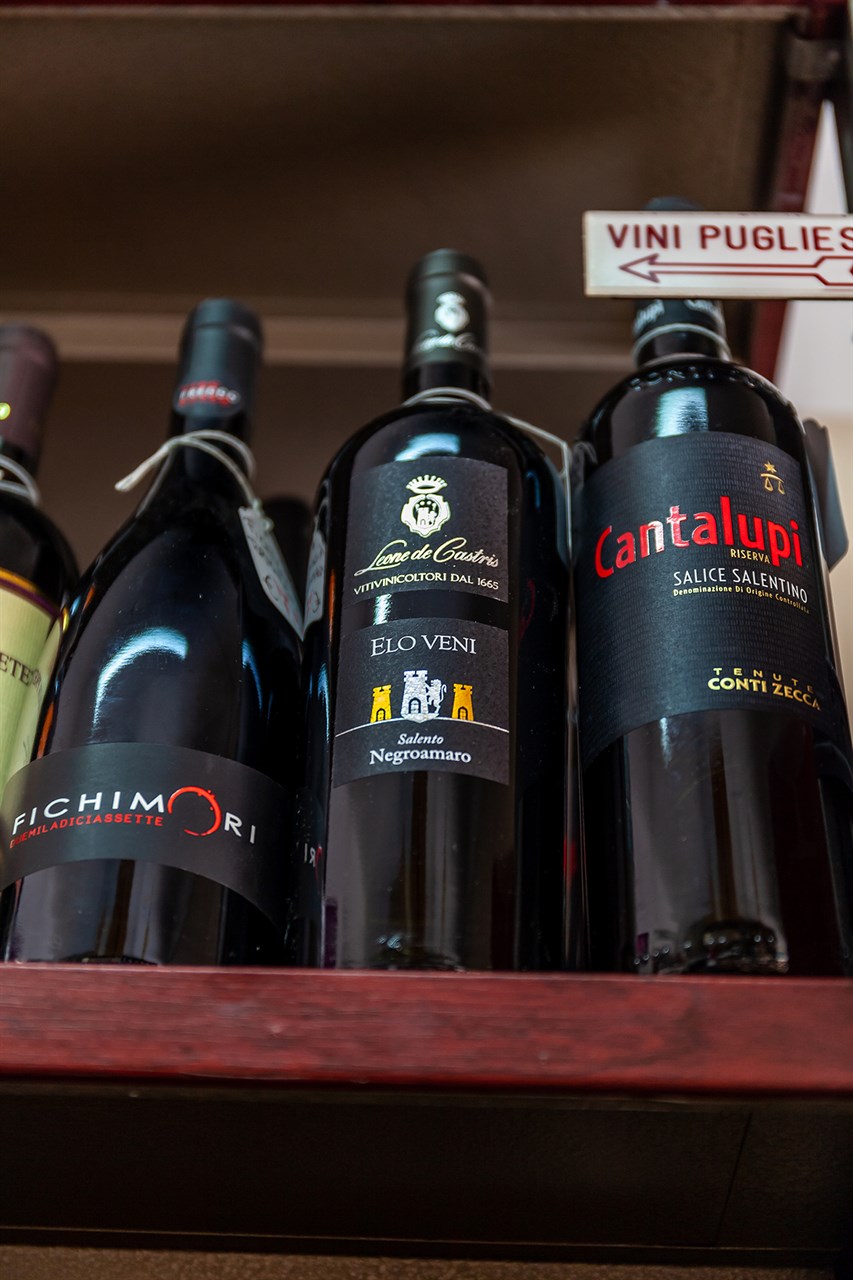
Fish and seafood dishes
Cozze alla Tarantina
(Mussel soup Taranto-style)
Ingredients (serves 4 people)1kg musselsOptional: 100g clams200g tomatoes1 clove of garlic1 chili pepperExtra virgin olive oil1 large glass of white wineA handful of chopped parsley1 slice of toasted white bread per personSalt and pepper
ProcedureWash and clean the mussels (and clams if you choose to add these), making sure to pull out all the beards. Skin the tomatoes (placing them in boiling water for half a minute to soften the skins) and chop. In a large pasta pan, put some olive oil, the chopped clove of garlic and half a chopped chili pepper (or more if you like it hot!). Then add a splash of white wine and once the alcohol has evaporated, add the tomatoes. Salt and pepper and when bubbling nicely, add the mussels (and clams) and cover with a lid. After about a minute, the mussels should be open. If not wait a little longer until they are. Then, sprinkle with some chopped parsley and serve with some crusty toasted bread.
Zuppa di Pesce alla Gallipolina
(Gallipoli style fish soup)Ingredients (for 4 people) 700g mix of grouper and white seabream filleted and cut into chunks200g king prawns1 cuttlefish, cleaned and cut into rings300g mussels1 onion1 clove of garlic1 glass of white wine1 bunch of parsley2 tins chopped, peeled tomatoesExtra virgin olive oil1 tbsp white wine vinegarsalt and pepper
ProcedureThe first thing you need to do is to ask your fishmonger to clean, descale and fillet all your fish and the cuttlefish for you. This makes life a lot easier!
Back in the kitchen, chop your onion and gently fry in olive oil in a large pan along with the clove of chopped garlic. Then add the two tins of chopped tomatoes and a tablespoon of white wine vinegar. Season with salt and pepper, mix well and cook slowly with the lid on until the tomatoes have mashed. At this point, add the cuttlefish rings and a handful of chopped parsley, cover, and cook for around 10 minutes, being careful not to stir or mix. Add the glass of white wine and, when this is bubbling gently, add the grouper and the white sea bream on top. Season again and put the lid back on and cook for another 10 minutes. Finally, add the peeled prawns and the debearded, washed mussels. Replace the lid once more and after about 5 minutes the mussels should have opened and the prawns cooked. If the soup gets too dry during the cooking process, add a little boiling water (though this is not a very liquid soup).
Sprinkle with a little more parsley and serve hot with some crusty bread and a crisp white wine.
Timballo di patate, riso, zucchine e cozze
(Timbale of potatoes, rice, courgettes, and mussels)Ingredients (for 6 people)1kg mussels200g rice500g courgettes1kg potatoesA dozen cherry tomatoes1 large onionA large handful of freshly chopped parsleyExtra virgin olive oilSalt and pepperA handful of breadcrumbs
ProcedureClean and scrape the mussels, making sure you pull out their beards and put them in a frying pan with a few leaves of parsley, a cherry tomato, a piece of garlic, some olive oil and a little white wine. Put on a high flame and cover. When the mussels are open (approx. 2-3 mins) drain off the liquid and save for later.Slice the potatoes, courgettes, and onions, halve the cherry tomatoes, finely chop the garlic and the parsley and soak and drain the rice. Using half of each of the ingredients, layer them in a flameproof casserole dish in the following order: sliced onion, a little oil, potatoes, courgettes, the best of the opened mussels, rice, tomatoes, pepper, garlic, chopped parsley, a little oil; repeat the layers finishing with the potatoes and lastly add the liquid that you drained from the mussels. If necessary add enough water so that it reaches halfway up the oven dish.Cover the casserole dish with a sheet of aluminium foil, place it on a moderate flame for about twenty minutes, sprinkle with some breadcrumbs and then transfer it to a pre-heated oven 200 ° for thirty minutes.
This recipe comes from "Il Gusto del Tacco" a wonderful book of Puglian recipes available in English, by Anna Maria Chirone Arnó.
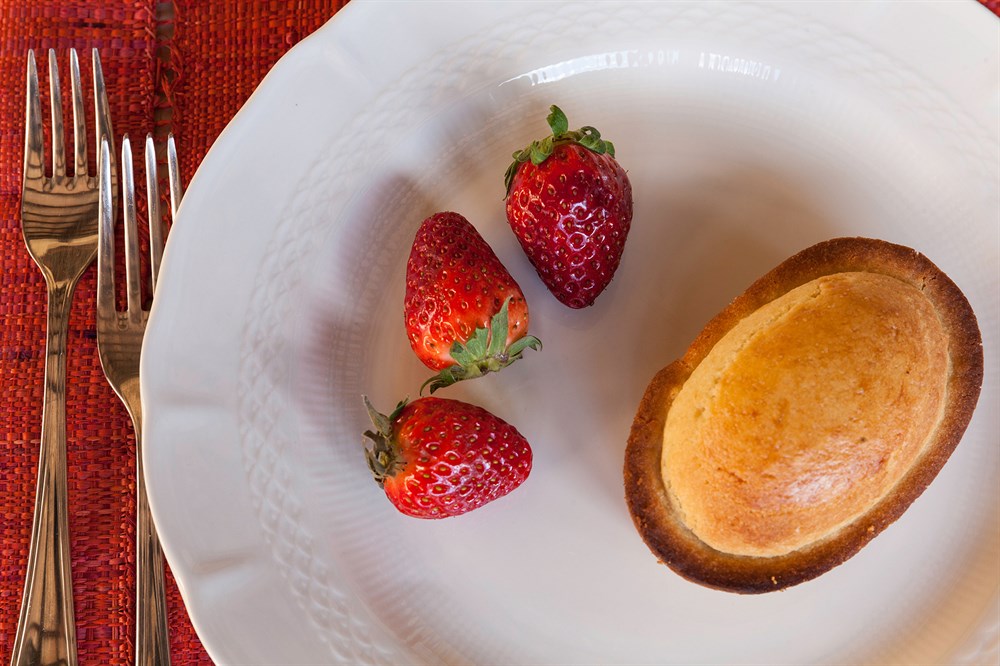
Desserts
Purcedduzzi
(Mini fried gnocchi with honey)
Ingredients for 6-8 people500g durum wheat semolina flour500g honey250g toasted almonds100g pine nuts150g extra virgin olive oil to bind the pastegrated mandarin orange skinoil for fryinga small glass of anisette mixed with cognac1 glass of Strega liquor or other1 sachet of vanilla powdera glass of mandarin orange juicecinnamona handful of hundreds and thousands for decoration
ProcedureHeat the oil with the whole mandarin skin in a small frying pan. Put the flour and the vanilla powder on to the pastry board and pour the squeezed mandarin orange juice into the middle along with the cooled oil flavoured with the mandarin skin and the liquor and bind together. If necessary, add more orange juice. Leave to rest for about 30 minutes and then make long rolls about 2cm diameter with the mixture. Then cut the rolls into small pieces, about 2cm long. Heat a good dose of olive oil in a pan and fry the “purcedduzzi” a few at a time. When cooked leave to dry on some kitchen paper. After frying the last “purcedduzzi”, pour the honey flavoured with the cinnamon into a pan and heat on a low flame, add the “purcedduzzi”, the toasted almonds and stir carefully, leaving them on the heat for a short time. Transfer to a large plate and decorate with hundreds and thousands and pine nuts. Leave to cool for a few minutes and then tuck in!
This recipe comes from "Il Gusto del Tacco" a wonderful book of Puglian recipes available in English, by Anna Maria Chirone Arnó.
Explore more about traditional Puglian food
